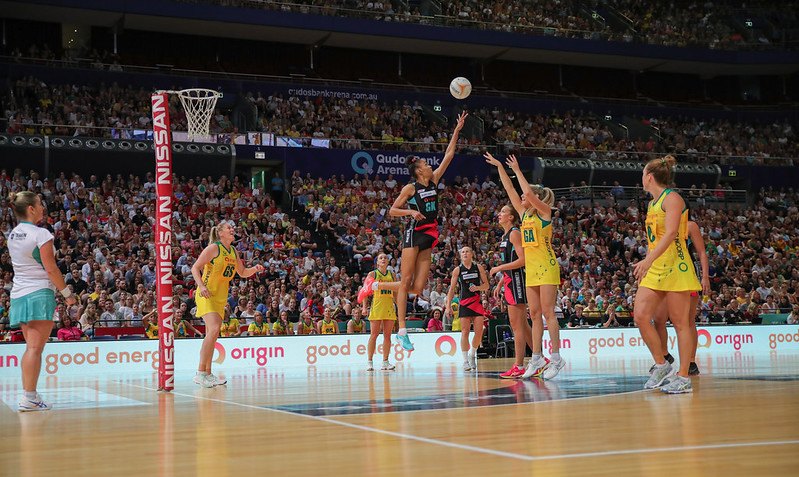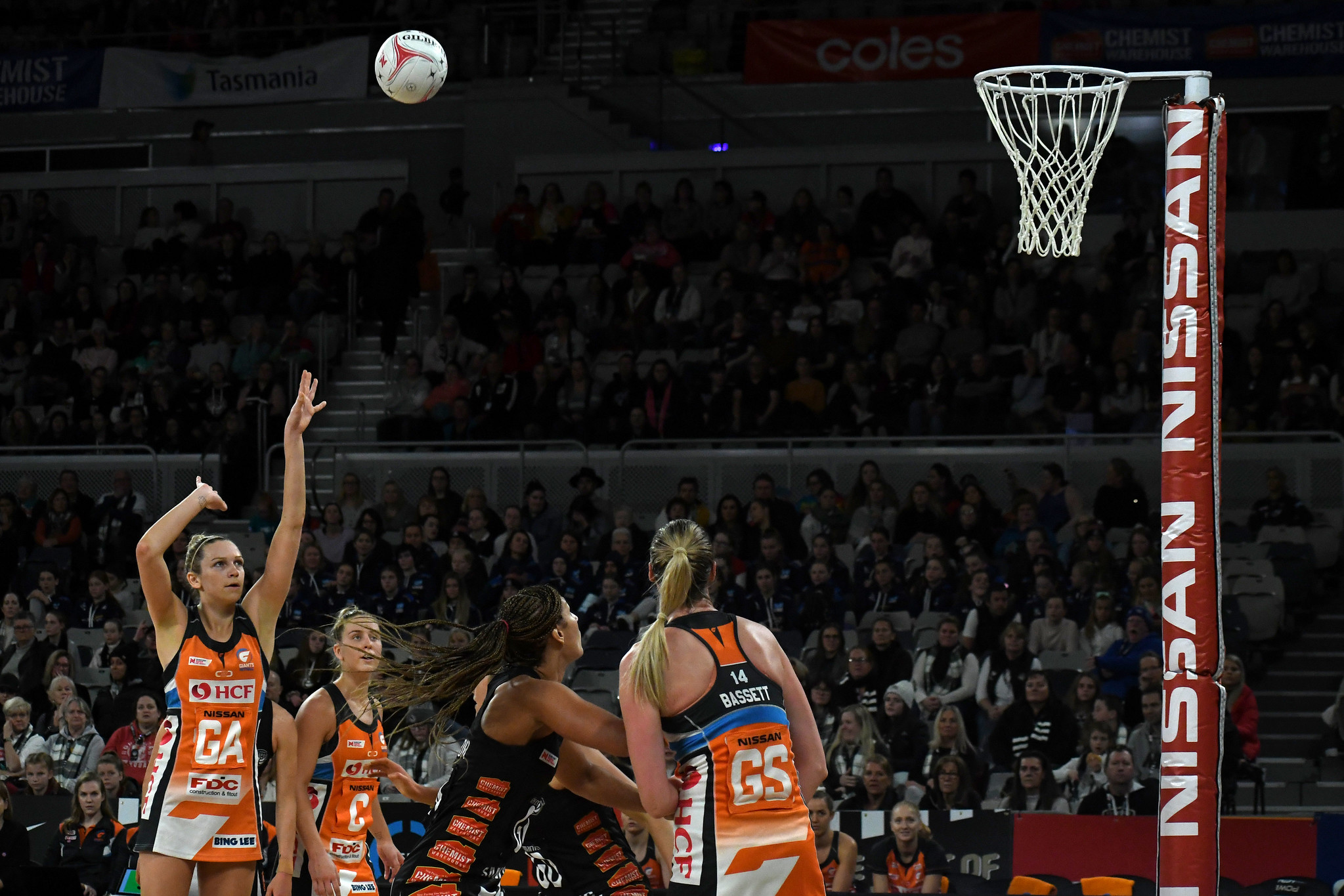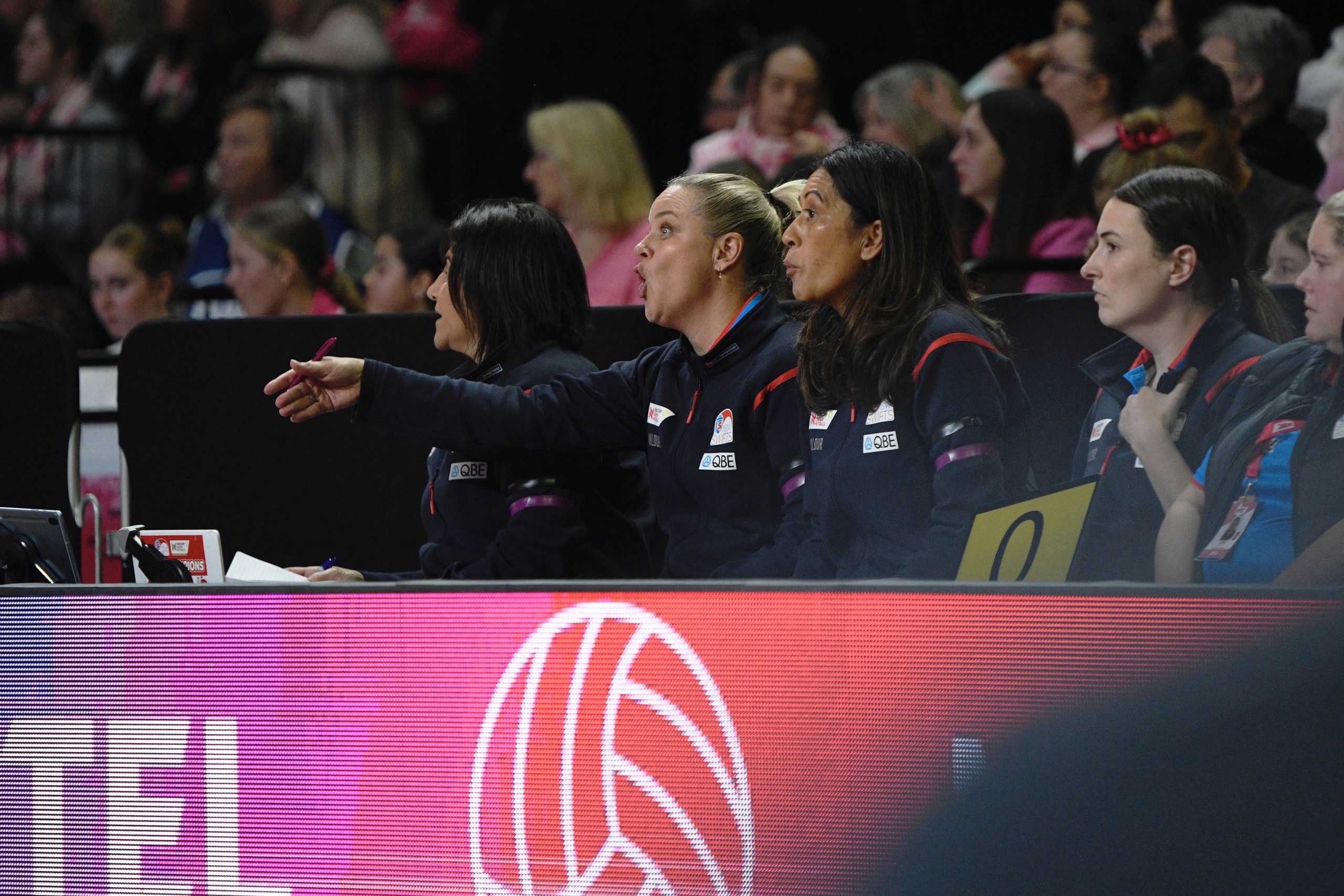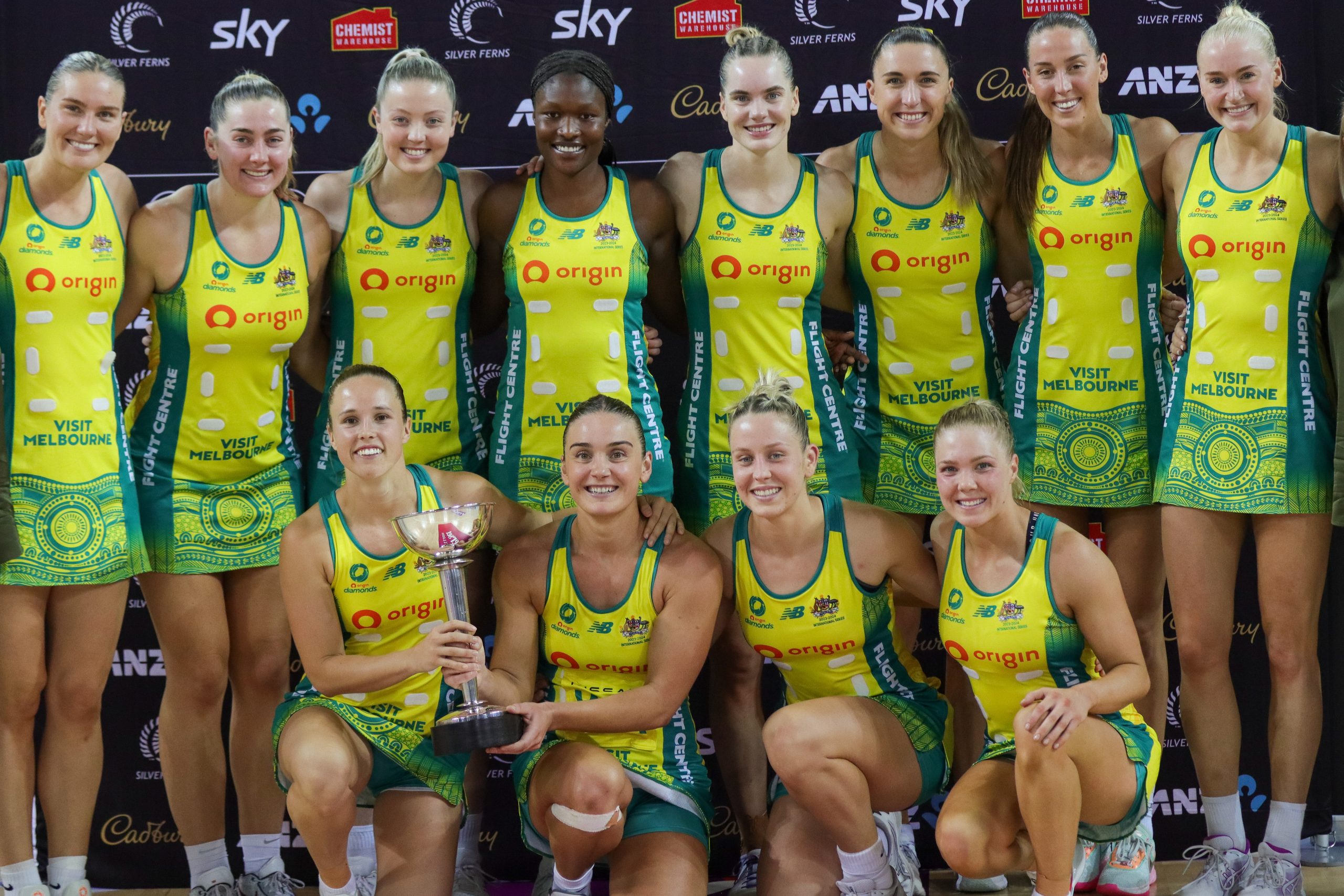If you are a netball fan anywhere in the world, the chances are that you’ve heard the latest news about the 2 Goal Super Shot being introduced into the Suncorp Super Netball league.
According to the press release issued by Suncorp Super Netball on 23 June 2020, the super shot ‘will provide goal attacks and goal shooters the opportunity to score two goals by shooting from a 1.9m designated zone within the goal circle. And, it will activate in the final five minutes of each quarter; providing a blend of the traditional game with the new.’
Let us make this point at the outset: The current dimension of a netball goal circle is a 4.9m radius. The 1.9m designated 2 goal zone is slightly more generous compared to the standard 2 goal zone in a game of Fast5 which is 1.4m. Most SSN goal attacks who regularly put up mid-to-long-range shots are within this 1.4m to 1.9m range anyway. So, essentially their approach to goal won’t change.

For athletes like Vixens gaoler, Tegan Philip, the approach to goal will be the same. Photo: Kirsten Daley
Naturally, the decision to implement the new rule has been met with a rousing response from the global netball community, who have been largely averse to the change. The reasons for the scorn have been as varied as they are widespread: some have cited the timing being five and half weeks out from the competition start date. Others have taken a traditionalist stance saying that the game doesn’t need to evolve because they love it as is. Some are against the ‘unprofessional manner’ in which the news was presented. And, some say, ‘cheapening’ netball to bribe new viewership is disrespectful to the league and game as a whole. Then there are the arguments of, what it will do to the quality of the games at an international or grassroots level?
Netball Scoop has broken down these arguments to see which are likely to have the biggest impact on the game:
Why Now?
Speaking to RSN Breakfast Club, Melbourne Vixens goaler Caitlin Thwaites stated how disappointed she was in the league’s decision to implement the new rule so close to the start of the 2020 competition.
“We are five and a half weeks out from our season starting and a rule has been thrown on us like that. The coaching staff, the recruiters and people like that would have loved to have known this information. It might have changed the skillset that your team requires.”
The SSN league have acknowledged the introduction of the 2 Goal Super Shot was earmarked for implementation in the 2021 league. However, with the market for televised sport likely to be far more competitive during the last six months of this year thanks to COVID-19, they felt the drastic change was needed to keep viewers from changing the channel.

9Netball shared a video via its Facebook page, of Suncorp Super Netball CEO, Chris Symington, answering some of the fans’ common questions. Amongst his responses, he addresses the timing and competitiveness of the market.
“The sports entertainment marketplace is highly competitive. It was before COVID-19 and even more-so now. We felt like this was as good a time as any to bring it in and felt like we were pushing ourselves and pushing our barriers to create excitement for the fans. And, to evolve the game and ensure the growth of the league.”
Calendars show that Symington isn’t wrong. The unfortunate reality is that due to the league start date being pushed back, it is now encroaching on a territory that is not just being occupied by winter sports’ biggest television draw cards in the AFL and NRL. It may also be fighting for viewers who would habitually watch cricket, tennis or European football during the offseason.
Roy Morgan reports that on average 7.2 million Australians tune in to watch at least one form of Cricket on TV during its season. That’s 35% of the Australian population. By comparison, the 2019 SSN grand final only drew 900,000 viewers – albeit it did win its time slot with 34.1% of viewership.
If the ICC go ahead with their planned start of the World T20 in October, netball will have a mammoth task in drawing viewers away from all of these codes.
The Traditionalist Argument
Non-surprisingly, fans are looking at this as another attack on the game they love. Super Netball Commission Chair, Marina Go, acknowledged the fans’ passion in her statement released on 24 June 2020.
In it, she says, “We welcome the debate because we want people to be talking about our sport and the sporting world to see your passion, to understand that this is a game that inspires and motivates.”
Symington highlighted the opportunity for growth with the introduction of the new rule.
“We trialled the Super Shot during the Bushfire Relief match. We felt like it is a good way to balance the traditional style of netball that we all know but also provide some incentive at the end of the quarter to get our athletes shooting long as well. So, blending the traditional style but also a bit of innovation and creativity.”

Gretel Bueta (nee Tippett) takes a super shot during March’s Bushfire Relief charity match. Photo: May Bailey
‘Innovation and creativity’ aren’t new concepts for netball. In recent years we have seen the need for athletes to evolve as the game grew. Today’s netballers are faster, stronger and more powerful than their predecessors. This evolution happened because the game has changed. It is no longer a ‘non-contact sport’ where players merely stand and shoot. Day in, day out our athletes are forced to put their bodies on the line for the game they love.
The most obvious, recent innovator which comes to mind, is Gretel Bueta (nee Tippett). Love or hate her style, there is no doubt that her basketball background has inspired many teams to introduce timely layups or fadeaways to their shooting arsenal. She is a new breed of powerful goal attack, one which many coaches are trying to replicate.
If we go back further, we stumble across the Harrison Hoist: a clever defensive manoeuvre created by New Zealand franchise Northern Mystics and implemented by their 2012 defenders, Anna Harrison, Kayla Cullen and Jessica Moulds. The tactic, while used less frequently nowadays, was inspiring when introduced and sparked fierce debate about whether it was ‘in the spirit of the game’. But it’s still being used quite effectively – much to the delight of fans, commentators and the athletes. Goal defence Karla Pretorius and defending partner Phumza Maweni are today’s best executors of the shot-block tactic.

Karla Pretorius and Phumza Maweni preparing for the Harrison Hoist. Photo: Marcela Massey
Lack of Consultation with key stakeholders
In the minutes and hours since the announcement, many fan favourite SSN stars took to social media to express their displeasure with the decision. But, as the saga unfolded, it quickly became apparent that they were not involved in the decision-making process.

In her interview with the RSN Breakfast Show, Thwaites elaborated on her feelings about the lack of input.
“The other issue that we have is the way that this has come about and that is what I am incredibly disappointed about. It has been quite underhanded and forced through at the last minute. It’s the biggest rule change that the game has ever seen and for the group to not have been consulted… We’ve actually got a competition committee as well, with all the stakeholders in coaches, players, umpires and everyone, and they were not consulted either. They found out with the hours’ notice before the press release went out. The way that is all going is incredibly unprofessional and it’s not okay for a sport to be doing things like that.”
The Australian Netball Players Association, who are ‘a collective voice to promote the interests and protect the welfare of Australia’s elite netballers’, have released a statement detailing their thoughts on the process. In it, Vixens defender Jo Weston, who is also the ANPA Vice-President acknowledges, and begrudgingly accepts the decision, but strongly urged for better from the SSN Commission moving forward.
“If this change is being trialled, then there must have been assumptions made about the benefits that it would bring, and appropriate consideration of risks. As players we need full access to the detail, so we can properly understand the thinking behind the experiment that we are being asked to participate in.
“Netball players are not just ‘cattle’ that train and play. We are smart, articulate, authentic and capable people, who proudly promote our sport on and off the court. We are proud to play in the best women’s sport league in the world, and take our responsibilities for showcasing our sport extremely seriously.
“We are simply seeking a level of basic respect for our role in the game, that was not exhibited this week in the manner in which this initiative was managed.
Enough said.

Vixens defender, and ANPA Vice-President, Jo Weston is one of the voices speaking out for the players. Photo: Danny Dalton
The Impact on International Netball
The arguments that the 2 goal shot will cause disruption or confusion for all the international athletes are plausible. However, rule changes such as the rolling subs and 2019’s time out rule, will likely have, or have had, a greater negative impact on the athletes at the international level.
Take the 2019 Netball World Cup for example; it would be a fair assumption that Australia’s international athletes have grown so accustomed to utilising time-outs as a mechanism for regrouping and swinging momentum, that when they reach the international stage and this option is removed, they found they did not have the practice of using their own game day merits to turn a game.
But, the practised ability to put up a long-range shot, in theory, will be just another tool at our shooters’ disposal. And, it is one which could be a timely welcome. Analysis of the Netball World Cup shot charts, from the playoffs shows a clear lack of risk-taking by the Origin Diamonds when compared to the likes of the English Roses and the Silver Ferns.

Stats from the bronze medal match of the 2019 Netball World Cup, courtesy of Champion Data.

Stats from the gold medal match at the 2019 Netball World Cup, courtesy of Champion Data
We are not saying that this is the only reason the Diamonds lost the gold. We are merely pointing out the discrepancies in the data. And yes, the Diamonds were more accurate directly under the post, but looking at the number of deflection gains of the New Zealand Silver Ferns coupled with the Diamonds turnovers, it would suggest far too much time was spent trying to get closer to the post. We’re simply asking when you have strong rebounders on the court like Bassett or Bueta, what is the harm in trying to put up the longer shots?
Is this just a PR Stunt?
Thwaites thinks so.
“As the Players Association, we are writing to the Commission to get the ‘What For’. Whether it is a PR stunt to get some attention on the game which, for me, is really disrespectful to the product that we have. We’ve got the absolute best league in the world and the best players out here. To have something like this to try and grab some headlines or new fans, that is actually disrespecting the want and the clear outcomes of the fans that we already do have. We have seen it time and time again in the polls that have gone out that the fans we do have really don’t want to see this.”
The 2 goal shot isn’t something new. We’ve seen it in Fast5 and it was a crowd-pleaser during the Bushfire Relief match.

Caitlin Thwaites going to post from the 2 goal range during the March 2020 Bushfire Relief Charity Match. Photo: May Bailey
Whether we like it or not, for netball to draw the major sponsors like that in the popular male-dominated sports, it does need to have entertainment value. Existing fans are echoing Thwaites’ claims that it is drawing the big names and it is entertaining. But, as is evidenced above by the broadcast viewership competition, it simply is not enough to compete. And, at this stage, it is not enough to draw larger buy-in from additional major sponsors.
As hard as it is, those that are making the decisions have to remove emotion and look at netball as a product and experiment with new ways to make money which can be reinvested in all the stakeholders.
At the end of the 2020 season, many of the SSN sponsorship deals are up. The league, as a whole, will be looking to pen new agreements with broadcasters and naming rights sponsors. Meanwhile, franchises will be looking to continue their partnerships with their major sponsors. For these negotiations to be successful or even more fruitful than they currently are, netball needs to show clear growth in its viewership.
At present, netball is marketed to a marginally, younger demographic: mostly 18-24 year olds and young girls at the grassroots level. And while this is great for growing grassroots netball and enticing positivity amongst young netballers, it isn’t that economical. The sport needs to be snagging the people with the money who will be reinvesting annually and those people, are in the older demographics.
Go acknowledged this in her statement on how the change can broaden the fan base.
“We are operating in a fast-moving sports environment where many sports are making innovative changes to their rules to increase the entertainment value of their game in order to position themselves for greater revenue opportunities. We have to be agile enough as a league to do the same.”
If the league is successful in negotiating larger payment deals from sponsors, it will create positive flow-on effects for the athletes and grassroots netball. The SSN athletes may secure larger paycheques, again making them the best-paid female athletes in the country. They will also be able to reinvest more time in the communities moulding and inspiring the next generation of netballers.
The effect on Grassroots netball
Former Diamond and Collingwood Magpies goaler, Nat Medhurst commented via her social media that she felt the move to introduce a 2 goal shot would move the league away from grassroots netball.

She is right that these budding netballers may want to emulate their heroes in putting up the riskier long shot. If they continued doing so, it could be at the detriment of their development of court smarts and ‘ball-sharing’.
But there is a flip side to that argument. Like every practised skill, if these young athletes spent more time developing their long-range shot because they are idolising their heroes who do it, they could become the next generation of Vicki Wilsons or Nicole Cusacks.
In terms of it affecting their understanding of the rules of netball: a simple discussion of ‘house rules’, like we do with Monopoly or Uno, is all that’s needed.

Kaylia Stanton was confident going to post from long range during the 2018 Fast5 World Series. Photo: Kirsten Daley
The 2 goal shot is a risk. Whether the reward will come … well … ask us again after the SSN Grand Final. But the intention is good, albeit executed quite poorly. To that end, the ANPA is seeking consultation at the end of the season about what measure will be used to define the super shot’s success or otherwise.
Animosity aside, while we are in the midst of a push for equal pay for women – and sportswomen are definitely experiencing a greater pay gap – if the chance is here to attract a greater payday for them, the real question should be: why wouldn’t you take the risk?








